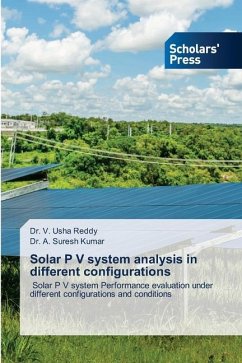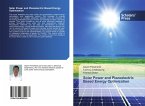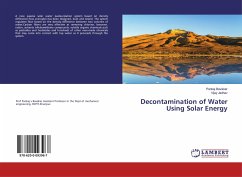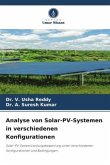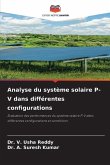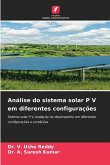The rapid emergence and evolution of renewable energy sources such as solar energy has become a vital component of the global effort to meet the energy needs of the future. The major concerns for continuous solar photovoltaic (PV) generation are partial shading conditions (PSC's), Hotspots, Degradation Rate, Bifacial PV Panels etc. These factors leads to increase in PV mismatch losses, decrease in fill factor and efficiency. One of the simplest solutions is the PV configurations. Hence in this book Series Parallel (SP), Bridge Link (BL), Triple Tied (TT) and Spider Web Tie (SWT) configurations are implemented on KC200GT 200 W PV system. Impact of Various factor such as Partial Shaded Conditions, Hotspots, Degradation Rate, Bifacial PV Panels are analysed. Optimal SMA and PSO MPPT Controller are evaluated for all SP, BL, TT and SWT configurations. The effectiveness of the Spider Web Tie (SWT) Configuration is evaluated in comparison with Series/Parallel (SP), Bridge-Link (BL), Triple-Tied (TT) configurations.
Bitte wählen Sie Ihr Anliegen aus.
Rechnungen
Retourenschein anfordern
Bestellstatus
Storno

